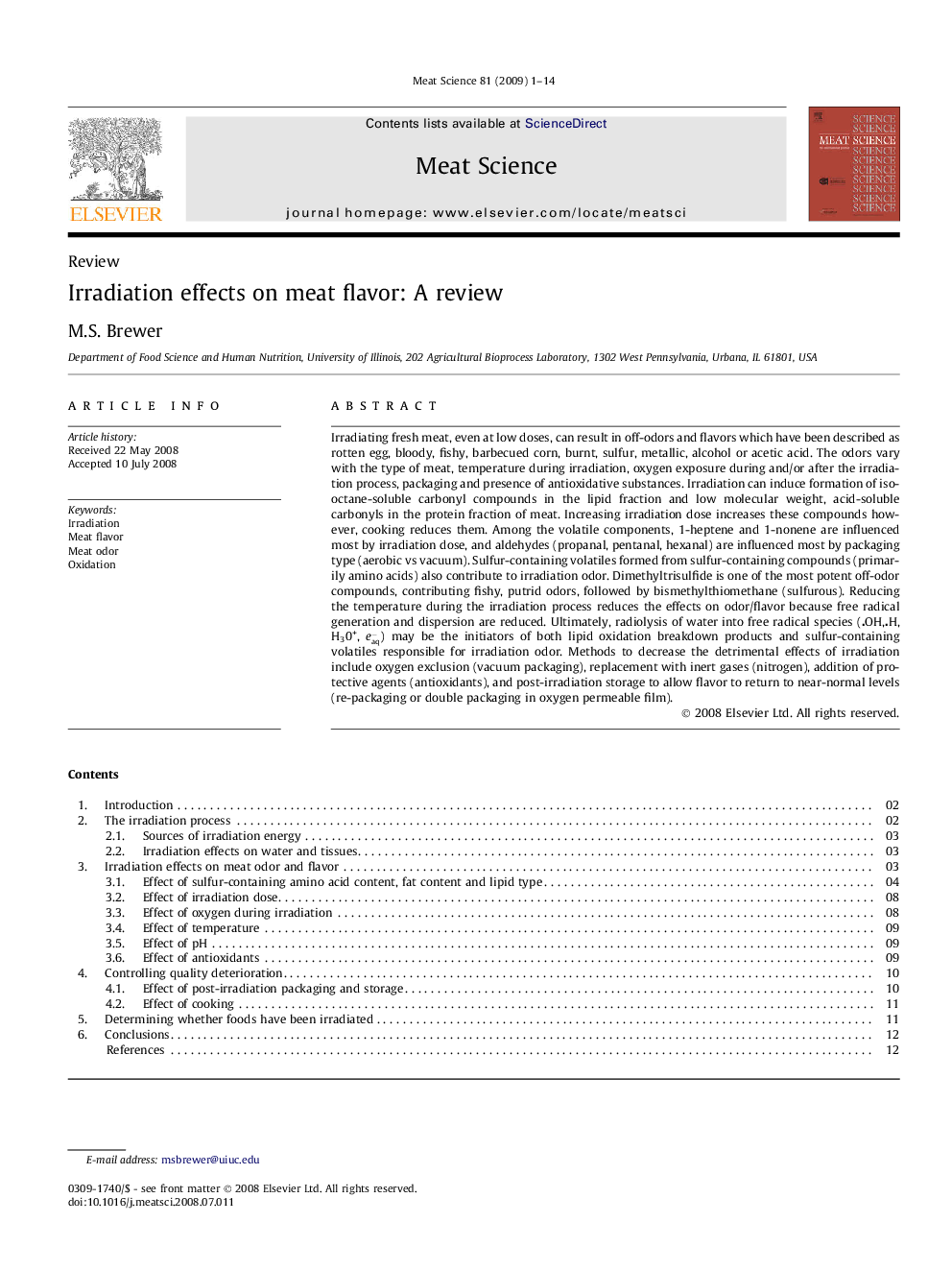| Article ID | Journal | Published Year | Pages | File Type |
|---|---|---|---|---|
| 2451306 | Meat Science | 2009 | 14 Pages |
Irradiating fresh meat, even at low doses, can result in off-odors and flavors which have been described as rotten egg, bloody, fishy, barbecued corn, burnt, sulfur, metallic, alcohol or acetic acid. The odors vary with the type of meat, temperature during irradiation, oxygen exposure during and/or after the irradiation process, packaging and presence of antioxidative substances. Irradiation can induce formation of isooctane-soluble carbonyl compounds in the lipid fraction and low molecular weight, acid-soluble carbonyls in the protein fraction of meat. Increasing irradiation dose increases these compounds however, cooking reduces them. Among the volatile components, 1-heptene and 1-nonene are influenced most by irradiation dose, and aldehydes (propanal, pentanal, hexanal) are influenced most by packaging type (aerobic vs vacuum). Sulfur-containing volatiles formed from sulfur-containing compounds (primarily amino acids) also contribute to irradiation odor. Dimethyltrisulfide is one of the most potent off-odor compounds, contributing fishy, putrid odors, followed by bismethylthiomethane (sulfurous). Reducing the temperature during the irradiation process reduces the effects on odor/flavor because free radical generation and dispersion are reduced. Ultimately, radiolysis of water into free radical species (OH,H, H30+, eaq-) may be the initiators of both lipid oxidation breakdown products and sulfur-containing volatiles responsible for irradiation odor. Methods to decrease the detrimental effects of irradiation include oxygen exclusion (vacuum packaging), replacement with inert gases (nitrogen), addition of protective agents (antioxidants), and post-irradiation storage to allow flavor to return to near-normal levels (re-packaging or double packaging in oxygen permeable film).
